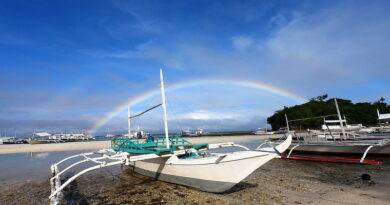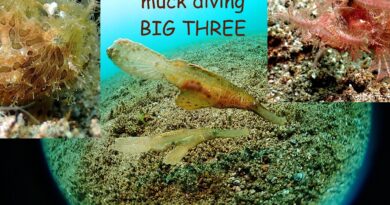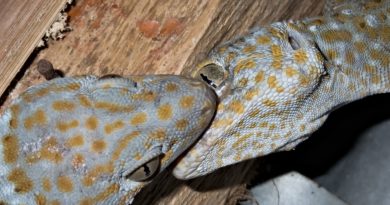El Niño and Sydney Marine Life
An El Niño is a warm weather system originating in the central Pacific Ocean; its occurrence is significant for the atmospheric conditions of the whole planet. In El Niño years, the trade winds usually blowing west to east across the Pacific Ocean weaken or reverse, and the nutrient balance of the ocean is changed. In eastern Australia, the weather becomes warmer and drier.
To predict if an El Niño will occur during a given year is a difficult task, and currently the prediction by NOAA (the National Ocean and Atmospheric Agency of the USA) is given at 65%. Will the current warm period continue and develop into a full El Niño episode? NOAA thinks this is more likely than not. To quote NOAA, “There remains uncertainty as to exactly when El Niño will develop and an even greater uncertainty as to how strong it may become. This uncertainty is related to the inherently lower forecast skill of the models for forecasts made in the spring.”. This is proper scientific careful language!
When looking at NOAA’s map of the sea surface temperature (SST – scientists love their acronyms) anomalies for the last 4 weeks, you can see that the ocean off New South Wales/Sydney is significantly warmer than the long-term average. Complementary with the water temperatures, the marine life in this part of the world looks different than it normally does during this time of the year. I say this both based to my own observations after diving here for 3 years, and based on talking to people who have been diving around Sydney for much longer. In brief, tropical and subtropical marine animals which often visit us at the end of the summer are still here in early June, and animals which normally come to the greater Sydney area in the winter are still missing.

Let’s look at some specific examples:
My friend Nicole spotted, and my friend Curtis photographed a robust ghost pipefish, Solenostomus cyanopterus, near Bare Island in Botany Bay on May 27th – 3 days before the start of winter. This fish is a seahorse relative, and the unusual body shape of the fish is to make it look like a leaf of seaweed. These are very hard to spot! Now, according to fishbase, the great database of all – surprise – fish, the southernmost distribution of this fish is about the middle of the coast of New South Wales. The Australia Museum has a point map, with individual specimen collected by the museum denoted by the location where they were found. The southernmost location is Shellharbor, near Wollongong, a hours drive along the coast south of Sydney. Thus, the robust ghostpipefish in Sydney Harbor or Botany Bay are near the southernmost edge for the distribution of this species.
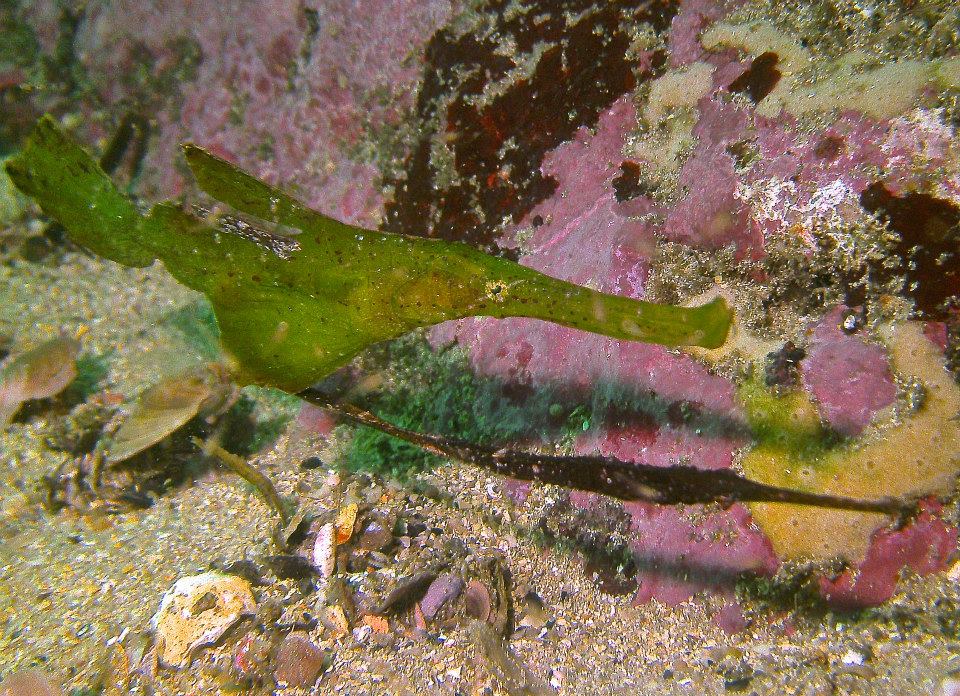
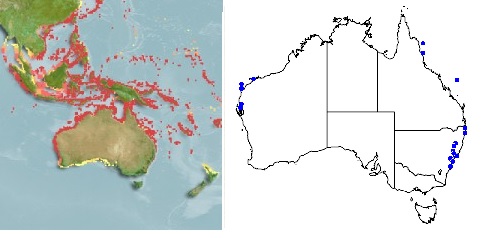
Cornetfish, Fistularia commersonii are quite common right now in Botany Bay and in Sydney Harbor. I encounter a few, often in pairs, on most dives. This is an unusual looking fish, also a distant relative of the pipefishes and seahorses. When they sleep, they take on a striped pattern, as if wearing old-time prison uniforms. Again, fishbase and the Australia Museum indicate that Sydney is about as far south as they should get, even though the Australia Museum lists a single specimen caught in the Bass Straight.
Thalassoma lutescens is a colorful small wrasse which I have seen in the tropics and subtropics many times. It is supposed to occur to southeastern Australia, and I saw one small individual during a dive in Botany Bat last weekend.
Chowder Bay, Sydney Harbor,is one of the top muck-diving sites in Sydney. The amount of interesting small animals there is just surreal. Since autumn, we have been seeing a small butterflyfish under the pier, certainly a species of Chaetodon, normally occurring in the tropics and sub-tropics (see the image below). The pictures I have of this fish I took at dusk, when it was already in its nocturnal coloration, and hence it’s hard to pinpoint which species exactly that is – any reader feedback? Sydney diving old-timers tell me that tropical fish like this one often settle in Sydney during the summer, but don’t survive the colder months. According to my reliable fish-watching friend Gaetano, this butterflyfish was still there last weekend, on the last day of May.
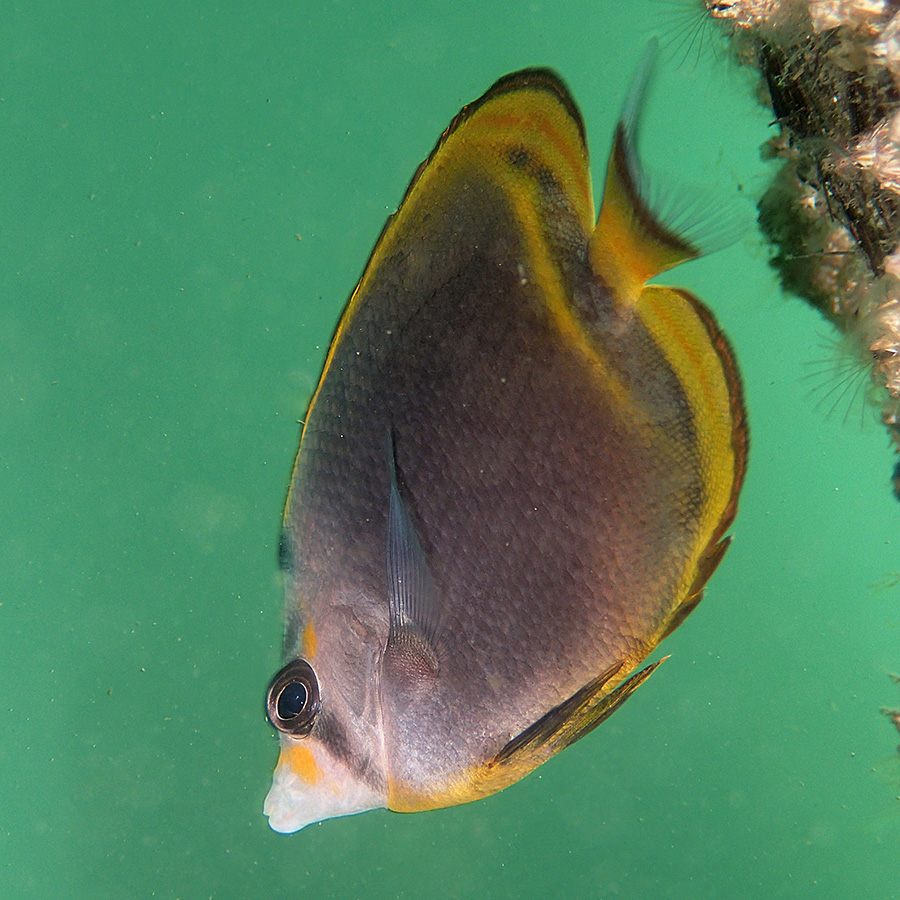
None of these animals are completely unexpected in Sydney – it’s not like seeing a zebra in Norway. But they are all on the southernmost edge of their known distributions, and that in the early winter, when the water is normally colder (but it was still 20C last weekend in Botany Bay).
There are also some animals which are conspicuously missing so far this year. Usually, Port Jackson sharks are coming to Sydney in the winter. These are small, bottom living horn sharks (the picture below is from last year). There they aggregate, mate, lay their eggs, and when the water gets warmer again they leave for more southern, cooler waters. This year, I have so far only seen one such shark, an adult fish, in the cave populated by grey nurse sharks at Magic Point/Maroubra. I’ve seen none of the aggregations usually found between the underwater boulders of Botany Bay like in previous years.

And there are also almost no seals yet near Wollongong, south of Sydney. Normally, dive shops organize very popular trips to these playful marine mammals, when the seals arrive together with colder water. But this year, the seal watching season has been delayed since few of them have shown up yet (the dive is happening in 2 weeks, though, and I am guiding it on the 15th. Yeah! Seals, please come!).
Conclusion: the current patterns in the Australian temperate east coast marine life are quite consistent with warm El Niño conditions. Does this mean I am absolutely convinced we are heading towards a date with Mr. Niño? No, but the marine fauna right now around Sydney certainly points in that direction, in accord with a lot of meteorological data.
